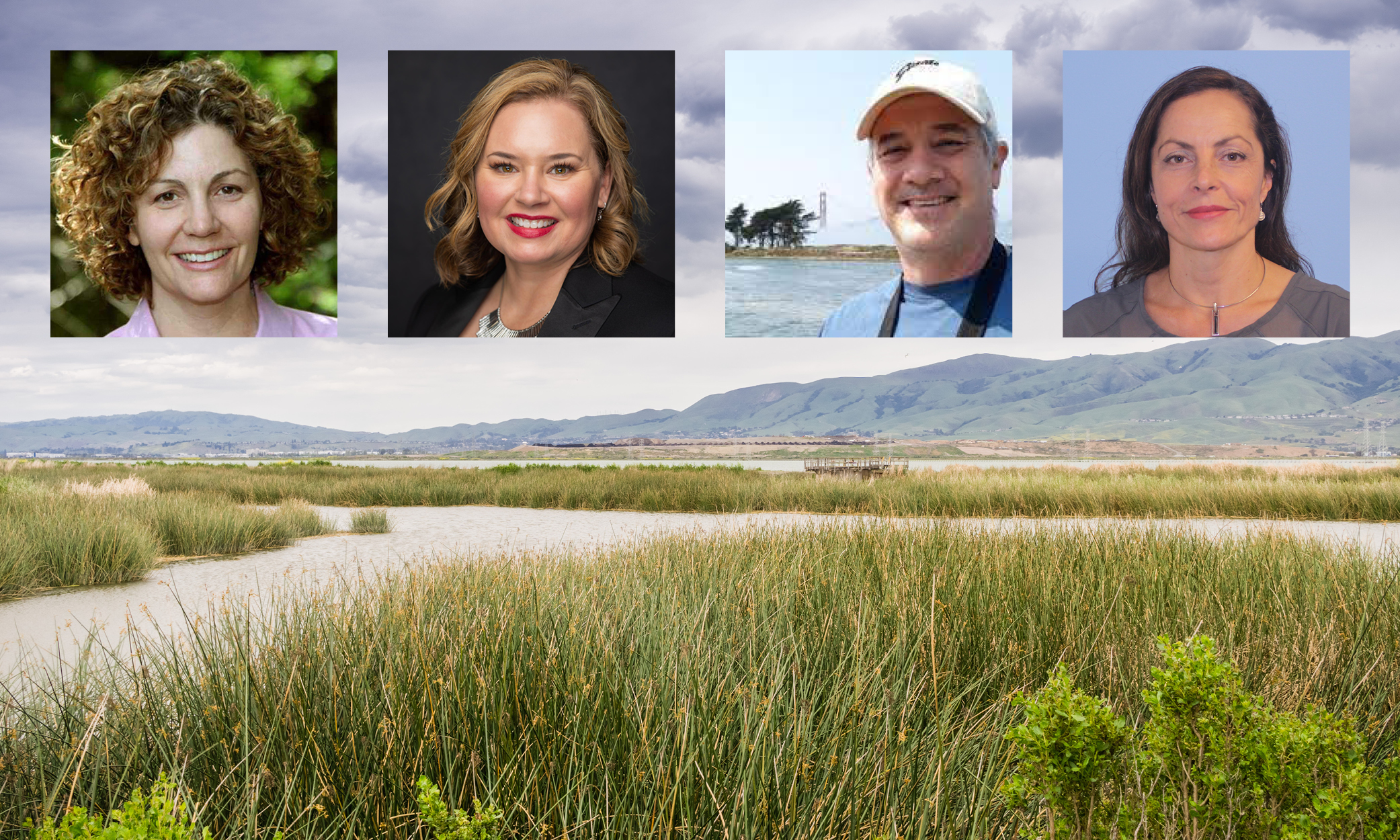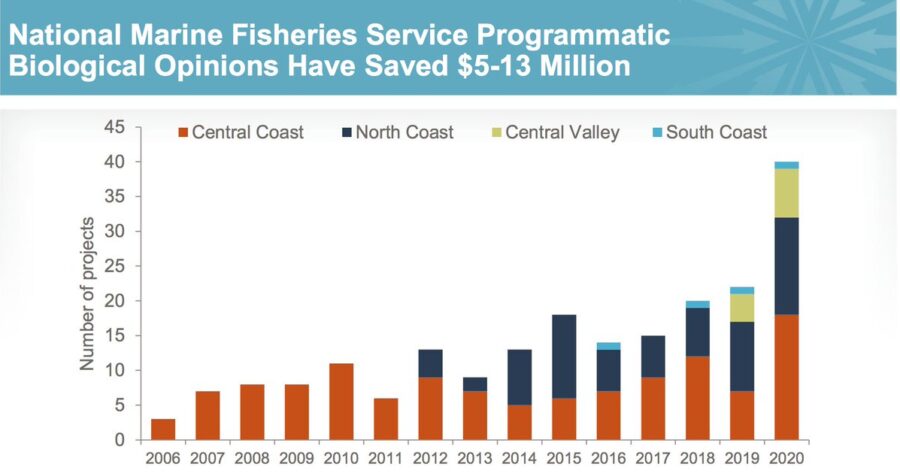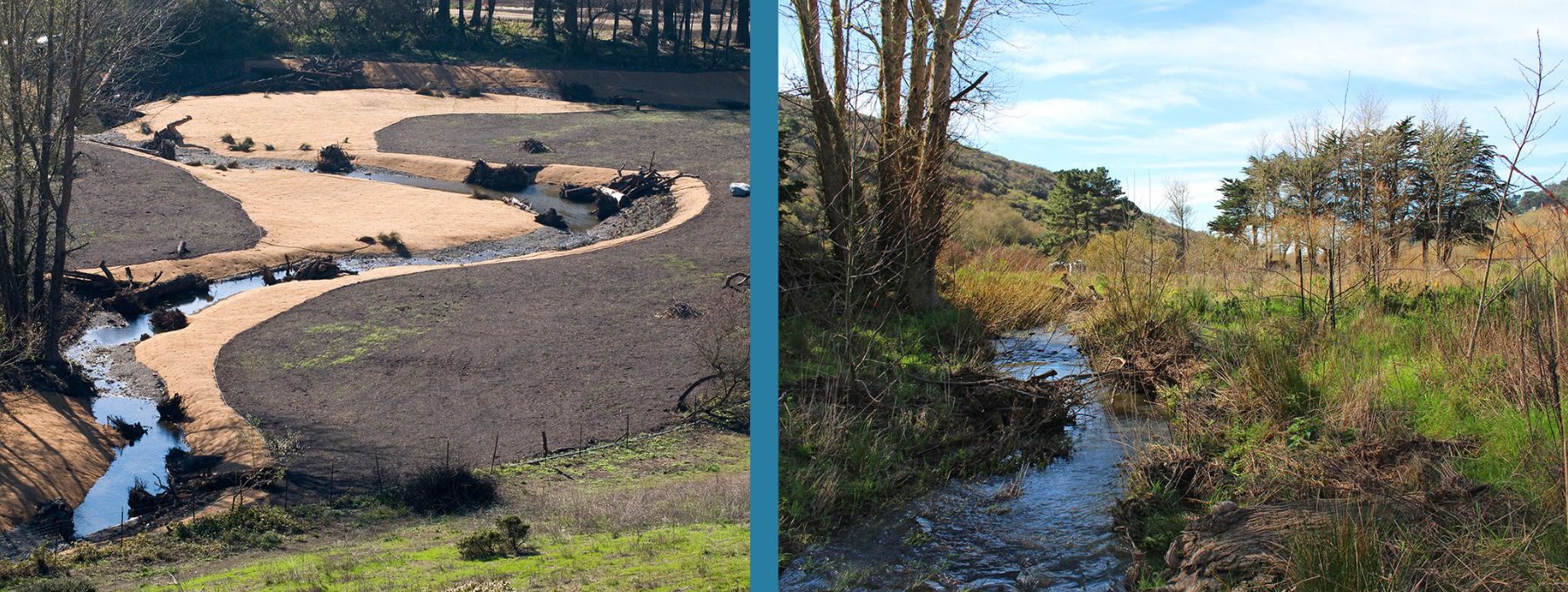
Advancing Ecosystem Restoration with Smarter Permitting panelists (left to right): Moderator Letitia Grenier (2020 PPIC CalTrout Ecosystem Fellow and resilient landscapes program manager, San Francisco Estuary Institute), Heather Dyer (CEO/general manager, San Bernardino Valley Municipal Water District), Xavier Fernandez (planning manager, San Francisco Bay Regional Water Quality Control Board), Erika Lovejoy (program director, accelerating restoration, Sustainable Conservation).
In case you missed it, the Public Policy Institute of California’s Water Center (PPIC) hosted a fantastic panel webinar on smarter ecosystem permitting this month. The panel discussed findings in PPIC’s latest ecosystem restoration report and tapped California restoration experts including our own Erika Lovejoy, who directs our Accelerating Restoration program to develop policy and regulatory incentives that increase the pace and scale of habitat restoration and water quality improvement projects in California.
Watch the full event here!
Saving Time and Money
In addition to a Habitat Restoration and Enhancement Act shout-out, the report also covers a key component of accelerating restoration permitting efforts in California: these permits save money.
The chart below documents millions of dollars saved thanks to biological opinions (BOs) at the National Marine Fisheries Service alone – and we’ve helped put many of those processes in place. The most recent is represented by that lovely swath of green Central Valley projects, thanks to our and our partners’ efforts to establish a restoration BO in 2018.

Source: Public Policy Institute of California
Building Real Partnerships
Heather Dyer of San Bernadino Valley Municipal Water District spoke to the need to form real partnerships that address individual needs and find lasting compromise. Xavier Fernandez of the San Francisco Bay Regional Water Quality Control Board noted that real restoration efforts take time and complex planning, but that big ticket projects like floodplain restoration can make a huge difference for our climate and habitat resilience.

Restoration takes time, planning and effort, but Californians are bringing our waterways back to life. Left photo by Paolo Vescia, right photo by Robyn Carliss.
As for working with agencies, Lovejoy noted that it’s important to treat agency staff as the partners they truly are. We can also work to put restoration efforts on a separate permitting track from development, secure more funding for habitat and ecosystem restoration, and support staff so they can help restorationists who are eager to revitalize our waterways with a plethora of innovative and time-tested techniques.
Why Restoration Matters
Different people undertake restoration projects for different reasons, but the overarching theme? No being, be it bipedal, finned, or feathered, can exist in a vacuum.
As panel host Letitia Grenier noted, without ecosystem-wide restoration, human and imperiled species health suffer. Without holistic watershed improvements, we can’t manage our natural resources in a changing climate. Without riparian improvements, recreation and habitat dwindle in tandem, and communities feel the long-reaching brunt of struggling river systems. We are all connected, and that connection is critical to our overall well-being, and survival.
Thanks so much to PPIC for hosting such a vital and informative event! Make sure to follow us on Twitter as we cover these events, and stay tuned for our Fall event offerings!
